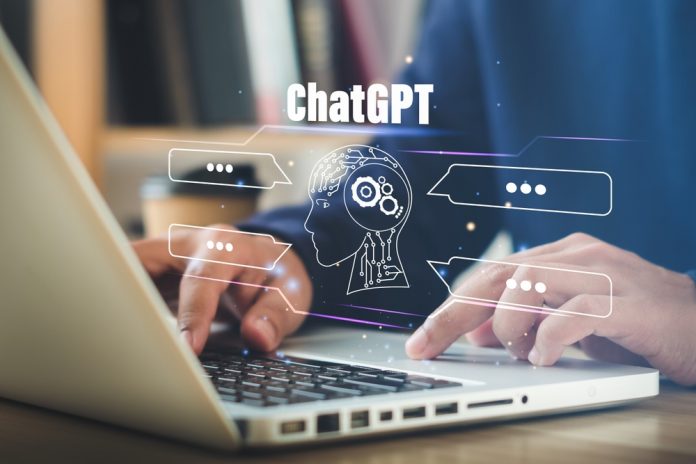
Script development is usually one of the most challenging elements of creating business videos that cover HR, training, or sales enablement topics. While video producers may have some clarity around what messages they wish to communicate, it can be tough to draft a script from scratch. This can be due to time constraints and limited resources, or a creative block that a writer/content creator just can’t get around.
However, a new player has entered the field – ChatGPT – and it has the potential to revolutionize just how training and development professionals create scripts. ChatGPT is a large language model (LLM) machine learning system that understands spoken and written prompts and generates new, conversational responses based on the billions of pages of internet content it was trained on. Its ability to gather information and return it in an understandable form is a powerful tool for L&D and marketing pros who need to slash video production time.
Pros and Cons
ChatGPT has its positives and negatives. On the plus side, it does a great job with the user’s information. It writes grammatically correct and remarkably clean copy and can aid in brainstorming and generating first drafts. It can be told to mimic various writing styles, and it can create almost any type of document.
Notable downsides include the critical fact that the algorithm has only been trained on internet content before October 2021, so results won’t always be current. It also doesn’t give the best image and video suggestions, and it is occasionally wrong – it can churn out incorrect copy quite confidently. Importantly, it might have some unknown security holes, so it is best to redact any sensitive or confidential information that you might not want to be seen or shared.
Making ChatGPT Work for You
One of the key benefits of using ChatGPT is that it does away with the fear of a blank page. It is often difficult to be creative and original instantaneously, and because of its near-instant responses, ChatGPT is excellent for fast turnarounds. Not only will ChatGPT assist with ideation on new topics, but it can also help cut time used for research. It is particularly adept at finding statistics, quotes, and opinions that can supplement your work. It can write, edit, proofread, and also offer SEO suggestions. What’s more, it does all of this in literally seconds.
How to Start Writing with ChatGPT – Promptly
ChatGPT works using “prompts,” – which are simple instructions that you provide to the AI engine, telling it what to do. A prompt can be as basic as “write me a script on how to make a cold call” or a more in-depth request that includes items such as a shot list and stage directions. Consider adding cues around the tone of voice and context to obtain a richer output.
Because it reconstitutes information found across the internet, ChatGPT isn’t creating its ideas. And despite its ability to write convincingly, it doesn’t do well with unclear prompts, so you’ll likely get a fairly generic response.
Key points to remember when prompting ChatGPT for sales enablement scripts, for example, include:
- The “who” – establishing the who identifies the “creator” of the piece and who will serve as its “voice.” This provides ChatGPT with important context and establishes the video’s point of view. Examples of “who” might include a technical subject matter, expert, your company’s VP of Sales or CEO, or a broad persona like an “entry-level field sales rep.” Doing this helps ChatGPT take a more narrow content sample, which in turn gets you better results. Another key part of the “who” is the target audience, enabling ChatGPT to formulate a more accurate response, be it for telesales reps, field sales, or any of the other discrete audiences that one finds in sales training and enablement.
- The “what” – keep the topic concise and clear. For example, say something like “write a telemarketing script for the new XYZ 1000 photocopier and printer” and point ChatGPT to resources like product URLs for even more specificity. The “what” becomes the basis for your narrative.
- The “how” – focus on style and format, and include inputs about length, and tone. One can even request that ChatGPT mimic specific kinds of videos. Example might include requesting a brief social media video script or an in-depth explainer complete with suggested on-screen graphics.
Specific to video production, ChatGPT can write you a quick script and can even give you shooting, voiceover, and stage direction ideas, that you can refine and make your own. The key to ChatGPT is writing good prompts, and it is best (and remarkably easy!) to experiment with the system to learn how it responds and what you can do with it.
A Sales Enablement Example
Developing sales enablement and training scripts is as easy as writing prompts like the following example, which covers a “product explainer” video for prospects. Here’s what you would tell ChatGPT:
“Act as an account executive. Write a video script for a 60-second explainer video that explains how to use your new product—a self-cleaning microwave. Explain to the user how to use the product and leave placeholders to highlight four key special features of the product. The audience is potential buyers of this new microwave who have visited your website and attended a webinar. In the script, include an interaction between a sales rep and a potential buyer. The tone is friendly, casual, and persuasive.”
This example prompt, and numerous others suitable for sales and employee training, can be found here to help you get started with using ChatGPT.
More Compelling Scripts
After an initial run-through with ChatGPT, you’re very likely to have something usable which you can custom-tailor and make your own. And while ChatGPT does an amazing job of cranking out a copy, it occasionally presents output that is clichéd and incorporates too many buzzwords.
That’s the time when the user can tweak ChatGPT’s output. This is done by making ChatGPT “regenerate the response” to create revisions that are variations on the initial prompt. To get rid of certain language (like buzzwords), one can adjust the prompt to exclude certain phrases. Experimenting with changes to your prompt(s) will gain you more varied results and will potentially improve accuracy.
Also, take a close look at the visual descriptions ChatGPT provides because they can also come across as generic. Remedying this situation is as simple as revising your prompt to make scenes more compelling and appropriate for a specific audience.
The Right Time for a Human Touch
When you’re done using ChatGPT’s built-in capabilities to finesse your script, it is likely faster to take over the final editing process yourself. Nuanced human capabilities are still better than AI for creating a polished and fully-finished script that takes into account factors like culture, language, and context – which are particularly important in today’s workplace.
This sort of “human touch” also applies to fact-checking and proofreading. And if you’re producing an animated video for sales enablement, transforming your script into a storyboard format will allow for effective syncing of sound and visuals.
In the end, ChatGPT will empower sales trainers to make videos much more quickly and efficiently. It creates highly workable content in seconds, leading to faster results that humans can fine-tune and quickly put into production. When it comes to L&D professionals who must do “more with less,” ChatGPT will become a valuable tool that will only become more effective moving forward.




